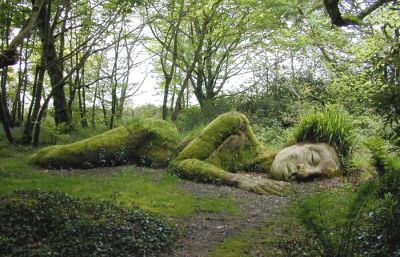
The gardens in Heligan near Mevagissey were reclaimed thanks to Tim Smit, the creator of the Eden Project . The estate was occupied by the Tremayne family from the early 17th century until the First World War, when the house was commandeered for use as a convalescent home for officers. During this period, the gardens were neglected and the neglect continued after the return of the family. This was at least partly due to social changes and the inability to find sufficient gardeners for estates of this size.
The walled Flower Garden was one of the first areas to be restored. Here were the great glass houses in which were grown peaches, grapes, bananas and citrus fruits. The surrounding area is believed to have the most complete collection of Victorian flowers in the country and also contains a small kitchen garden. In the Melon Garden are the manure heated pineapple pits, unique in this country.
An organic vegetable garden contains a wide variety of vegetables grown using traditional Victorian methods. The Japanese Garden is set in the valley which funnels down towards the fishing village of Mevagissey. This area is also known as the Jungle and contains many sub tropical plants imported in the 19th century. A series of ponds punctuates the valley, watering the many ferns, bamboos and palms which flourish here.
In all there are four walled gardens and many other fascinating corners of these once lost gardens. The Sundial Garden has one of the finest examples of an herbaceous border whilst the Italian garden is charming and understated. In the Pleasure Garden is a summerhouse, commanding lovely views and featuring an unusual cobbled floor. There is also the Crystal Grotto , which used to be illuminated by candlelight on warm summer evenings. A wishing well is not far away and is just one of the romantic edifices decorating this area of the garden.
The main house is not open to the public but there are some tearooms and other facilities in the gardens. Perhaps the main interest is the retention of the old methods of gardening here, resulting in great productivity. The gardens were once intended to feed not only a large family but all of a large indoor and outdoor staff required to run a large estate.









